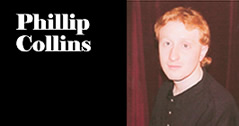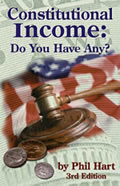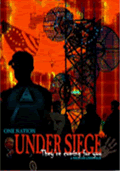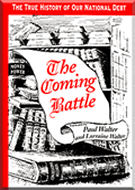Other
Collins
Articles:
Darwinism and the Rise of Gnosticism
Engineering Evolution: The Alchemy of Eugenics
NOTHING
BEYOND THE FLESH: THE THEOCRACY OF PRIMA MATERIA
PART 3 of 5
Phillip
D. Collins
October 7, 2006
NewsWithViews.com
Argument From Abstraction: The Teleological Case for Supra-sensible Entities
Knowledge of a transcendant, supra-sensible realm is made possible by man's innate cognitive power of abstraction. Abstraction is the ability to observe the sensible world and extrapolate from it universal principles. In Summa Theologiae, Christian philosopher Thomas Aquinas explains abstraction:
Our intellect cannot know the singular in material things directly and primarily. The reason for this is that the principle of singularity in material things is individual matter; whereas our intellect understands by abstracting the intelligible species from such matter. Now what is abstracted from individual matter is universal. Hence our intellect knows directly only universals. But indirectly, however, and as it were by a kind of reflexion, it can know the singular, because. . .even after abstracting the intelligible species, the intellect, in order to understand actually, needs to turn to the phantasms in which it understands the species� Therefore it understands the universal directly through the intelligible species, and indirectly the singular represented by the phantasm. And thus it forms the proposition, "Socrates is a man." (Pt. I, Qu. 86, Art. I)
This argument reiterates the words of the Apostle Paul in Romans 1:20:
For the invisible things of him from the creation of the world are clearly seen, being understood by the things that are made, even his eternal power and Godhead; so that they are without excuse. (Romans 1:20)
Through abstraction, Paul recognizes the intrinsic finality of creation. Sensible objects gesticulate toward universal principles. Although these principles are inherently intangible, they find tangible expression when applied to corporeality. In turn, these universal principles gesticulate toward a universal Creator. The axiomatic nature of such finality leaves man with no excuse for doubt and unbelief. This argument is teleological. That is, it recognizes a directive principle intrinsic to nature.
In Confession of Nature, Gottfried Wilhelm Leibniz uses abstraction to establish the centrality of a supra-sensible God to the temporal spatial universe. According to Leibniz, the proximate origins of "magnitude, figure, and motion," which constitute the "primary qualities" of corporeal bodies, "cannot be found in the essence of the body" (de Hoyos). Linda de Hoyos reveals the point at which science finds a dilemma:
The problem arises when the scientist asks why the body fills this space and not another; for example, why it should be three feet long rather than two, or square rather than round. This cannot be explained by the nature of the bodies themselves, since the matter is indeterminate as to any definite figure, whether square or round. For the scientist who refuses to resort to an incorporeal cause, there can be only two answers. Either the body has been this way since eternity, or it has been made square by the impact of another body. "Eternity" is no answer, since the body could have been round for eternity also. If the answer is "the impact of another body," there remains the question of why it should have had any determinate figure before such motion acted upon it. This question can then be asked again and again, backwards to infinity. Therefore, it appears that the reason for a certain figure and magnitude in bodies can never be found in the nature of these bodies themselves. (No pagination)
The same can be established for the body's cohesion and firmness, which left Leibniz with the following conclusion:
Since we have demonstrated that bodies cannot have a determinate figure, quantity, or motion, without an incorporeal being, it readily becomes apparent that this incorporeal being is one for all, because of the harmony of things among themselves, especially since bodies are moved not individually by this incorporeal being but by each other. But no reason can be given why this incorporeal being chooses one magnitude, figure, and motion rather than another, unless he is intelligent and wise with regard to the beauty of things and powerful with regard to their obedience to their command. Therefore such an incorporeal being be a mind ruling the whole world, that is, God. (de Hoyos, no pagination)
This argument refutes the scientistic claim that the physical universe constitutes the "totality of reality." In fact, the ontological plane of the physical universe cannot be considered a per se subsistent form of substance. It is underpinned by an immaterial order. The manifestation of sensible objects within corporeality is the result of the unseen interchange of transcendant principles outside of the temporal spatial realm. Rene Guenon recapitulates:
The truth is that the corporeal world cannot be regarded as being a whole sufficient to itself, nor as being isolated from the totality of universal manifestation: on the contrary, whatever the present state of things may look like as a result of "solidification," the corporeal world proceeds entirely from the subtle order, in which it can be said to have its immediate principle, and through that order as intermediary it is attached successively to formless manifestation and finally to the non-manifested. If it were not so, its existence could be nothing but a pure illusion, a sort of fantasmagoria behind which there would be nothing at all, which amounts to saying that it would not really exist in any way. That being the case, there cannot be anything in the corporeal world such that its existence does not depend directly on elements belonging to the subtle order, and beyond them, on some principle that can be called "spiritual," for without the latter no manifestation of any kind is possible, on any level whatsoever. (213-14)
Although the transcendant principles discerned through abstraction are not quantifiably demonstrable, they do find tangible expression in their practical application. For instance, the principles of geometry are actuated through architecture.
Although geometry makes possible the quantification of certain physical entities, its principles did not stem from any previous system of empirical measurement. Instead, they stem from man's abstraction of the subtle, incorporeal order from the temporal spatial realm. To assert otherwise is to ontologically sever humanity from its true source of knowledge.
The Modern Mythmakers
Of course, scientific materialists would love to believe otherwise. According to the modern theory of Darwinism, living matter willed itself into existence out of non-living matter. This notion, dubbed "spontaneous generation," excludes the involvement of a supernatural Creator. Thus, nature became a god creating itself. Louis Pasteur, whose work established the Law of Biogenesis, provided the most succinct summation of this anthropomorphic mysticism:
To bring about spontaneous generation would be to create a germ. It would be creating life; it would be to solve the problem of its origin. It would mean to go from matter to life through conditions of environment and of matter [lifeless material]. God as author of life would then no longer be needed. Matter would replace Him. God would need to be invoked only as author of the motions of the universe. (Dubos 395)
Like all of the false gods of antiquity, the voracity of this new deity was soon demolished. The Law of Biogenesis proved "spontaneous generation" impossible. However, this fact did not stop certain "men of science" from chronically deifying nature. For instance, Charles Darwin unconsciously revealed his idolatrous impulses through statements like "natural selection picks out with unerring skill the best varieties" (Hooykaas 18). Evident in such statements is the idea that nature is sentient. After all, only a sentient being holds discriminative tastes and, therefore, "picks out" the recipients of its favor. Moreover, such statements reveal that "nature" itself is a sovereign deity acting as the ultimate arbiter of life and death. There is a name for such a religious institution: idolatry. The apostle Paul observed that the practice of idolatry involved the worship and service of "created things rather than the Creator" (Romans 1:25). The apotheosizing of nature, a "created thing," whether dignified by institutionalized mysticism or so-called "science," is tantamount to idolatry.
The religious institution of "nature worship" is certainly nothing new. The ancient Mystery religion of Babylon and Egypt venerated an impersonal force as "God." This force was an immanent energy that channeled itself through all things--rocks, trees, oceans, clouds, animals, humans, and, ultimately, the universe itself. As antiquity gave way to modernity, this religious Weltanschauung eventually provided a conceptual segue for the enthronement of scientific materialism. Father Clarence Kelly observes that pantheism:
can be used as a stage in bringing people from theism to atheistic materialism. In religion, pantheism is most often expressed as Naturalism--"the doctrine that religious truth is derived from nature, not revelation..." (17)
Meanwhile, the idea that non-living matter somehow willed itself to become living matter is also derivative of older occult doctrines. The idea can be found in the ancient Hebraic Kabbalah. Within this occult text, readers will find the legend of the golem, an artificially created man generated from lifeless matter. The late Isaac Bashevis Singer, who studied the Kabbalah extensively, explained:
"the golem is based on faith that dead matter is not really dead, but can be brought to life. What are the computers and robots of our time if not golems? The Talmud tells us of an interpreter by the name of Rava who formed a man by this mysterious power. We are living in an epoch of golem-making right now. The gap between science and magic is becoming narrower." (Qutd. in Hoffman 115; emphasis added)
According to the evolutionary Weltanschauung, nature is "God" and man is its artificially created golem. In short, evolutionism is religious in character. In fact, Darwinian evolution constitutes merely another link in an unbroken ideational chain that has traversed centuries. W. Warren Wagar elaborates:
Nineteenth-and early twentieth-century thought teems with time-bound emergent deities. Scores of thinkers preached some sort of faith in what is potential in time, in place of the traditional Christian and mystical faith in a power outside of time. Hegel's Weltgeist, Comte's Humanite, Spencer's organismic humanity inevitably improving itself by the laws of evolution, Nietzsche's doctrine of superhumanity, the conception of a finite God given currency by J.S. Mill, Hastings Rashdall, and William James, the vitalism of Bergson and Shaw, the emergent evolutionism of Samuel Alexander and Lloyd Morgan, the theories of divine immanence in the liberal movement in Protestant theology, and du Nouy's telefinalism--all are exhibits in evidence of the influence chiefly of evolutionary thinking, both before and after Darwin, in Western intellectual history. The faith of progress itself--especially the idea of progress as built into the evolutionary scheme of things-is in every way the psychological equivalent of religion. (106-07)
There is one invariant feature within this long ideational chain: the worship of "progress" itself. In fact, the terms "evolution" and "progress" can be used interchangeably. Expanding on the religion of progress and its numerous permutations, Rama Coomaraswamy makes the following observation:
In point of fact, the idea of "progress," used in this sense, pre-dated Darwin by decades if not by centuries. One finds it used during the English Reformation where the "Recussants"--those who refused to abandon the Catholic faith--were described as "backward," while those who accepted the "established" state-enforced religion--were "progressive." The concept was further developed during the so-called "age of enlightenment" when people like Rousseau, Voltaire and Diderot dreamed of creating a perfect society without God. Kant embraced it in his "Idea of a Universal History on a Cosmopolitical Plan," a text in which he taught that history followed predetermined laws and revealed what be called "a regular stream or tendency" which demonstrated a "natural purpose" which would end in a "Universal civil society." Spencer spoke of the "law of progress" and defined evolution as "a change from an indefinite incoherent homogeneity to a definite coherent heterogeneity through continuous differentiations and integrations." He went on to teach that "the operation of evolution is absolutely universal. . .Whether it be in the development of the earth, in the development of life upon its surface, in the development of society, of government, of manufactures, of commerce, of language, of literature, science, art, this same advance from the simple to the complex, through successive differentiations, holds uniformly. . ." Hegel taught that humanity was driven ceaselessly upwards by an all-powerful, all-rational "It", and that the path of the ascent was an eternal, immutable, predestined, zigzag--his thesis and antithesis--always resulting in a higher synthesis. Evolutionary theory developed as a result of applying these ideas to biology. It provided a "scientific" basis for man's belief in progress and found ready acceptance in a world that sought to free itself from all divine sanction. From the time of Darwin, progress and evolution have become almost interchangeable terms that are mutually supportive and pervasive influences in our lives. (No pagination)
This religion was the edifying force behind the sociopolitical Utopian radicalism of the nineteenth- and early twentieth-century. It found expression in the secular humanism of the Enlightenment and the violent Jacobinism of revolutionary France. Eventually, it would birth the Promethean faith, which James H. Billington describes as follows:
A recurrent mythic theme for revolutionaries--early romantics, the young Marx, the Russians of Lenin's time--was Prometheus, who stole fire from the gods for the use of mankind. The Promethean faith of revolutionaries resembled in many respects the general belief that science would lead men out of darkness into light. (6; emphasis added)
|
Subscribe to the NewsWithViews Daily News Alerts! |
Automatically,
astute readers will identify the Promethean faith's inherent scientism.
It was the Promethean revolutionary's religious conviction that science
would facilitate humanity's salvation by insuring the survival of
the species and guiding it along its alleged political evolution towards
a global society. Astute readers will also recognize this ideology's
mythical character. Historically, myths have played an integral role
in the maintenance of socialist totalitarian governments. For instance,
Nazism was premised upon the religious conviction that Germany's eugenical
regimentation would result in the reemergence of the mythical Aryan.
Likewise, communism was underpinned by the myth of a "worker's paradise"
and a "classless society." For
part four click below.
Click Here for part -----> 1, 2, 4, 5,
Sources Cited:
1.
Angus, S. The Mystery-Religions: A Study in the Religious Background
of Early Christianity. New York: Dover Publications, 1975.
2. Aquinas, Thomas. Summa Theologiae. Pt. I, Qu. 86, Art. I,
in Basic Writings of Saint Thomas Aquinas. Ed. Anton C. Pegis (New
York: Random House, 1945), I.
3. Bainbridge, William Sims. "Religions for a Galactic Civilization."
Excerpted from Science Fiction and Space Futures, edited by Eugene
M. Emme. San Diego: American Astronautical Society, pages 187-201,
1982.
4. Baker, Jeffrey. Cheque Mate: The Game of Princes. Springdale,
PA: Whitaker House, 1995.
5. Billington, James H. Fire in the Minds of Men: Origins of
the Revolutionary Faith. New York: Basic, 1980.
6. Carlson, Ron, Ed Decker. Fast Facts on False Teachings.
Eugene, Oregon: Harvest House Publishers, 1994.
7. Coomaraswamy, Rama. "The Fundamental Nature of the Conflict
Between Modern and Traditional Man--Often Called the Conflict Between
Science and Faith." 2001. Coomaraswamy Catholic Writings. 26 August
2005.
8. de Hoyos, Linda. "The Enlightenment's Crusade Against Reason."
The New Federalist 8 Feb. 1993.
9. Dubos, Rene J. Louis Pasteur: Free lance of Science. New
York: Charles Scribner's Sons, 1976.
10. Fischer, Frank. Technocracy and the Politics of Expertise.
Newbury Park, California: Sage Publications, 1990.
11. Guenon, Rene. The Reign of Quantity and the Signs of the
Times. Trans. Lord Northbourne. Baltimore, Maryland: Penguin Books
Inc, 1953.
12. Hickman, R. Biocreation. Worthington, Ohio: Science Press,
1983.
13. Hoffman, Michael. Secret Societies and Psychological Warfare.
Coeur d'Alene, Idaho: Independent History & Research, 2001.
14. Hooykaas, Reijer. Religion and the Rise of Modern Science.
London: Chatto and Windus, 1972.
15. Howard, Michael. The Occult Conspiracy. Rochester, Vermont:
Destiny Books, 1989.
16. Huxley, Aldous. Brave New World Revisited. New York: Bantam
Books, 1958.
17. Kelly, Rev. Clarence. Conspiracy Against God and Man. Appleton,
WI: Western Islands, 1974.
18. Kurtz, P. and E.H. Wilson, eds. Humanist
Manifesto II. 1973.
19. Lewin, Leonard, ed., The Report from Iron Mountain on the
Possibility and Desirability of Peace. New York: Dell Publishing,
1967.
20. Martin, Malachi. The Keys of this Blood. New York: Simon
and Schuster, 1991.
21. Pesce, Mark. "Ontos and Techne." Computer-Medicated Magazine,
April 1997
22. Pittenger, Mark. American Socialists and Evolutionary Thought,
1870-1920. Madison: Wisconsin UP, 1993.
23. Raschke, Carl A. The Interruption of Eternity: Modern Gnosticism
and the Origins of the New Religious Consciousness. Chicago: Nelson-Hall,
1980.
24. Rummel, R.J. Freedom, Democide,
War. 13 March 2000. U of Hawaii. 19 September 2003.
25. Shermer, Michael. "The
Shamans of Scientism." Scientific American. 13 May 2002.
26. Taylor, Ian T. In the Minds of Men: Darwin and the New
World Order. Toronto: TFE Publishing, 1999.
27. Wagar, W. Warren. H.G. Wells and the World State. New Haven,
CT.: Yale UP, 1961.
28. Webb, James. The Occult Establishment. Open Court, 1976.
29. Wilder-Smith, B. The Day Nazi Germany Died. San Diego,
CA: Master Books, 1982.
� 2006 Phillip D. Collins
- All Rights Reserved
Phillip D. Collins acted as the editor for The Hidden Face of Terrorism. He has also written articles for Paranoia Magazine, MKzine, NewsWithViews, B.I.P.E.D.: The Official Website of Darwinian Dissent, the ACL Report, Namaste Magazine, and Conspiracy Archive. In 1999, he earned an Associate degree of Arts and Science. In 2006, he earned a bachelors degree with a major in communication studies and a minor in philosophy. During the course of his seven-year college career, Phillip has studied philosophy, religion, and classic literature.
He has recently completed a newly expanded and revised edition of The Ascendancy of the Scientific Dictatorship (ISBN 1-4196-3932-3), which is available at Amazon.com. He is also currently co-authoring a collection of short stories, poetry, and prose entitled Expansive Thoughts. It will be available late Fall of 2006.
E-Mail: collins.58@wright.edu
This religion was the edifying force behind the sociopolitical Utopian radicalism of the nineteenth- and early twentieth-century. It found expression in the secular humanism of the Enlightenment and the violent Jacobinism of revolutionary France.














